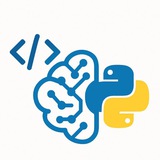"Data Structures & Algorithms using Python"
This book of 222 pages implements all types of #DATASTRUCTURES and #ALGORITHMS. And it's💯 #FREE.
Download Free: https://donsheehy.github.io/datastructures/fullbook.pdf
By: https://t.me/DataScience4
This book of 222 pages implements all types of #DATASTRUCTURES and #ALGORITHMS. And it's
Download Free: https://donsheehy.github.io/datastructures/fullbook.pdf
By: https://t.me/DataScience4
Please open Telegram to view this post
VIEW IN TELEGRAM
Please open Telegram to view this post
VIEW IN TELEGRAM
👍12❤2
Open Guide to Data Structures and Algorithms
A must-read for anyone starting their journey in computer science and programming. This open-access book offers a clear, beginner-friendly introduction to the core concepts of data structures and algorithms, with simple explanations and practical examples. Whether you're a student or a self-learner, this guide is a solid foundation to build your DSA knowledge. Highly recommended for those who want to learn efficiently and effectively.
Read it here:
https://pressbooks.palni.org/anopenguidetodatastructuresandalgorithms
#DSA #Algorithms #DataStructures #ProgrammingBasics #CSforBeginners #OpenSourceLearning #CodingJourney #TechEducation #ComputerScience #PythonBeginners
⚡️ BEST DATA SCIENCE CHANNELS ON TELEGRAM 🌟
A must-read for anyone starting their journey in computer science and programming. This open-access book offers a clear, beginner-friendly introduction to the core concepts of data structures and algorithms, with simple explanations and practical examples. Whether you're a student or a self-learner, this guide is a solid foundation to build your DSA knowledge. Highly recommended for those who want to learn efficiently and effectively.
Read it here:
https://pressbooks.palni.org/anopenguidetodatastructuresandalgorithms
#DSA #Algorithms #DataStructures #ProgrammingBasics #CSforBeginners #OpenSourceLearning #CodingJourney #TechEducation #ComputerScience #PythonBeginners
Please open Telegram to view this post
VIEW IN TELEGRAM
❤6👍4
Forwarded from Python Data Science Jobs & Interviews
1. What is the output of the following code?
2. Which of the following data types is immutable in Python?
A) List
B) Dictionary
C) Set
D) Tuple
3. Write a Python program to reverse a string without using built-in functions.
4. What will be printed by this code?
5. Explain the difference between
6. How do you handle exceptions in Python? Provide an example.
7. What is the output of:
8. Which keyword is used to define a function in Python?
A) def
B) function
C) func
D) define
9. Write a program to find the factorial of a number using recursion.
10. What does the
11. What will be the output of:
12. Explain the concept of list comprehension with an example.
13. What is the purpose of the
14. Write a program to check if a given string is a palindrome.
15. What is the output of:
16. Describe how Python manages memory (garbage collection).
17. What will be printed by:
18. Write a Python program to generate the first n Fibonacci numbers.
19. What is the difference between
20. What is the use of the
#PythonQuiz #CodingTest #ProgrammingExam #MultipleChoice #CodeOutput #PythonBasics #InterviewPrep #CodingChallenge #BeginnerPython #TechAssessment #PythonQuestions #SkillCheck #ProgrammingSkills #CodePractice #PythonLearning #MCQ #ShortAnswer #TechnicalTest #PythonSyntax #Algorithm #DataStructures #PythonProgramming
By: @DataScienceQ 🚀
x = [1, 2, 3]
y = x
y.append(4)
print(x)
2. Which of the following data types is immutable in Python?
A) List
B) Dictionary
C) Set
D) Tuple
3. Write a Python program to reverse a string without using built-in functions.
4. What will be printed by this code?
def func(a, b=[]):
b.append(a)
return b
print(func(1))
print(func(2))
5. Explain the difference between
== and is operators in Python.6. How do you handle exceptions in Python? Provide an example.
7. What is the output of:
print(2 ** 3 ** 2)
8. Which keyword is used to define a function in Python?
A) def
B) function
C) func
D) define
9. Write a program to find the factorial of a number using recursion.
10. What does the
*args parameter do in a function?11. What will be the output of:
list1 = [1, 2, 3]
list2 = list1.copy()
list2[0] = 10
print(list1)
12. Explain the concept of list comprehension with an example.
13. What is the purpose of the
__init__ method in a Python class?14. Write a program to check if a given string is a palindrome.
15. What is the output of:
a = [1, 2, 3]
b = a[:]
b[0] = 10
print(a)
16. Describe how Python manages memory (garbage collection).
17. What will be printed by:
x = "hello"
y = "world"
print(x + y)
18. Write a Python program to generate the first n Fibonacci numbers.
19. What is the difference between
range() and xrange() in Python 2?20. What is the use of the
lambda function in Python? Give an example. #PythonQuiz #CodingTest #ProgrammingExam #MultipleChoice #CodeOutput #PythonBasics #InterviewPrep #CodingChallenge #BeginnerPython #TechAssessment #PythonQuestions #SkillCheck #ProgrammingSkills #CodePractice #PythonLearning #MCQ #ShortAnswer #TechnicalTest #PythonSyntax #Algorithm #DataStructures #PythonProgramming
By: @DataScienceQ 🚀
❤4
